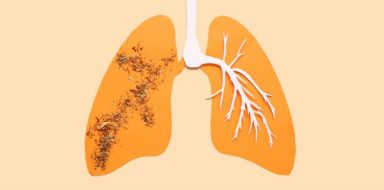From Hot Flashes to Healthy Locks
Alopecia is a condition characterized by the partial or complete loss of hair from areas where it normally grows. While it can occur at any age, there is evidence to suggest that menopause may be one of the contributing factors. This article will delve into the topic of alopecia in menopause, explore the possible causes and discuss the link. Additionally, we will provide insights into various vitamins that can help prevent hair loss and discuss different treatment options, including Litfulo, a once-daily medication used for severe alopecia areata in adults and adolescents over 12.
Vitamins for Hair Loss Prevention
While alopecia can be distressing, some vitamins and supplements can help prevent hair loss and promote healthy hair growth.
- Biotin (vitamin B7): Biotin helps strengthen hair and improve its texture, reducing the risk of breakage. It also supports the production of keratin, a protein that is essential for hair health.
- Iron: Iron deficiency can lead to hair loss. Supplementing with iron can help replenish the body's iron stores and support healthy hair growth.
- Vitamin D: Adequate vitamin D levels are vital for hair follicle cycling and maintaining healthy hair growth. Increasing vitamin D intake can potentially improve hair health.
- Vitamin E: Vitamin E is an antioxidant that may protect hair follicles from oxidative stress, promoting healthy hair growth. It also supports a healthy scalp.
- Omega-3 fatty acids: Found in fish oil supplements, omega-3 fatty acids can help reduce inflammation and maintain a healthy scalp environment, which is crucial for healthy hair growth.
Some of the early signs of menopause at age 40 include mood swings, hot flashes, irregular periods and other menopausal symptoms.
Understanding Alopecia
Before we delve into the specifics, let's first understand what alopecia is. Alopecia is a condition characterized by the partial or complete loss of hair. It can affect the scalp, eyebrows, eyelashes or other parts of the body where hair is present. There are various types of alopecia, including androgenetic alopecia (pattern hair loss), alopecia areata (patchy hair loss), telogen effluvium (temporary hair shedding) and others.
Genetics plays a significant role in androgenetic alopecia, with hormonal changes, aging and environmental factors also influencing its onset. Other forms of alopecia may be triggered by autoimmune diseases, medications or stress.
The Link Between Alopecia and Menopause
One of the main factors contributing to alopecia is hormones. Menopause is a natural biological process that occurs in women, typically between the ages of 45 and 55. During menopause, the hormonal balance in a woman's body undergoes significant changes due to decreased estrogen levels. These hormonal fluctuations can have various effects, including hair loss.
The precise mechanisms of how menopause contributes to alopecia are not yet fully understood. However, it is believed that the decline in estrogen levels and the dominance of androgens (male hormones) during menopause play a significant role. Androgens, such as dihydrotestosterone (DHT), can cause hair follicles to shrink, leading to shorter and thinner hair strands. Thus, hormonal imbalances in menopause potentially contribute to hair loss.
Treatment Options for Alopecia
Treatment options for alopecia vary depending on the underlying cause and the severity of the condition. Here are some common treatment approaches.
Topical Minoxidil: Minoxidil is an FDA-approved over-the-counter medication commonly used to treat androgenetic alopecia. It is available in various strengths and forms, such as a liquid or foam, and is applied directly to the scalp to promote hair growth.
Hormone Replacement Therapy (HRT): For menopausal women experiencing alopecia due to hormonal imbalances, HRT may help restore hormonal equilibrium. However, the decision to undergo HRT should be made in consultation with a healthcare professional.
Platelet-Rich Plasma (PRP) Therapy: PRP therapy involves extracting platelet-rich plasma from a person's blood and injecting it into the scalp to stimulate hair growth. It is often used for various types of alopecia, including androgenetic alopecia.
Low-Level Laser Therapy (LLLT): LLLT involves the use of red light therapy to stimulate hair follicles and promote hair growth. It can be administered at home with handheld devices or by visiting a medical professional.
Litfulo: Litfulo is a prescription medication used to treat severe alopecia areata in adults and adolescents over 12 years of age. It is a kinase inhibitor that works by binding to specific proteins in immune cells that are attacking the hair follicle. This results in fewer hair follicles being attacked by immune cells, which leads to less inflammation and a decrease in hair loss.
Final Notes
Alopecia can be a distressing condition, especially during menopause. The hormonal imbalances experienced during this time can contribute to hair loss in women. However, some various vitamins and supplements may help prevent hair loss and promote healthy hair growth. If you are struggling with hair loss, it is crucial to consult with a healthcare professional to determine the most appropriate approach for your specific needs.







